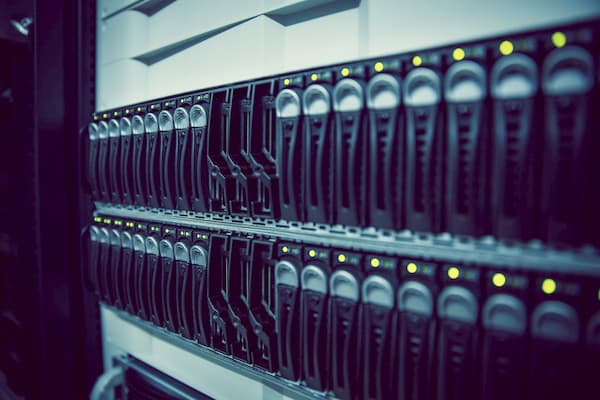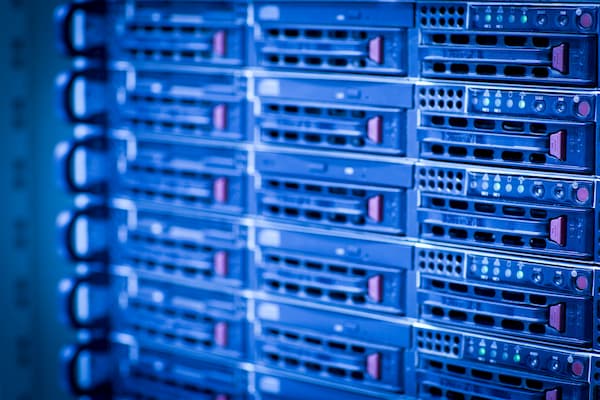Photo by Christina @ wocintechchat.com on Unsplash
Servers and computer hardware have a lifespan and become outdated just like many other things we use in our business and personal lives. For business owners and IT, managers running servers and data centers is a crucial part of their operations, and the common thought is that the life of a server lasts three or five years, but the truth is much more complicated.
Usually, servers and data equipment surpass this average lifespan with periodical upgrades and part replacements. Unfortunately, upgrades and part replacements only go far, and eventually, your hardware will become unsupportable.
Factors Affect The Life Of A Server
There are some basic signs to identify a failing data management system.
Much of your server lifespan is dictated by the following factors:
- RAID Storage
- Hardware Life Cycle
- Depreciation Cycle
Starting with RAID storage, these are multiple drives working together to do the job of one drive. When using RAID storage, the life expectancy halves when the number of drives doubles, which affects the overall health of your servers. The hard drives in your data management systems experience their own life cycles.
Check Your Hard Drives Frequently
Hard drives are the long-term data storage component for most devices. They are a crucial operation component because they store necessary data, and they experience their life cycle separate from the overall device. However, failing hard drives can affect the overall life span of servers and other data management equipment.
Hard drives last on average about three to five years, and their survival rate is marked by failure rates, which are when the hard drive malfunctions resulting in an inability to access necessary data for device operation. As more failures occur, the hard drive survival rate drops.
Common Signs To Look For

Hard drive life expectancy varies upon several factors. For example, the two primary types, HDDs and SSDs, each have different points of failure. Solid State Drives (SSD) often die due to sector failure, which benefit greater from RAID storage. Hard Disk Drives (HDD) often fail after the head falls out of alignment and scratches around the disk while it’s still running.
Other factors are environmental dust, brand, and size. Knowing the signs of a failing hard drive is crucial to replace it without losing data. The most common sign is operational malfunctions. For example, freezing, slowed functions, or an error message talking about corrupt data. If your devices are experiencing any of these, you should back up your data and replace your hard drive.
You want to regularly check your RAID controller to make sure sectors aren’t starting to fail; often SSDs don’t fail as soon as one sector fails. Instead you can head off the problem before a drive dies in your RAID.
Create a IT Asset Disposal Routine To Prevent Emergency Failures
If your data management system or servers are failing or slowing down, it is more than likely due to hard drive issues. Luckily replacing hard drives is relatively easy to do and cost-effective.
As a business owner or IT manager, knowing when to decide to replace parts on a server is crucial to managing your equipment. You should consider replacing your server with a new one once the upgrades and replacement parts are valued the same as a new server.
So, until that point, it is a great strategy to replace components or purchase upgrades for your server to extend its lifespan. However, there is a standard method for properly replacing server components.
Recycle The Old Parts As You Replace Them
If you are replacing parts as part of your equipment lifecycle management, you’ll want to safely dispose of the company’s sensitive data. You should also be responsible when disposing of the older parts due to the hazardous material in them. The electrical components of servers contain harmful chemicals and heavy metals that require special recycling.

Luckily many businesses specifically handle IT supply recycling. These companies will remove hazardous materials and take the reusable components for new products. You make sure that any business you do choose uses data destruction certificates as legal proof they shredded your equipment to their base components. Otherwise you run the risk of old drives being resold, where savvy data miners can use data recovery tools to steal your sensitive data.
Don’t Neglect Your Data Management System’s Health
The life of a server is a crucial aspect of your business’s operations. Knowing the health and maintenance of it helps you or your IT manager better prepare, prevent, or resolve issues in your system when they inevitably arise. Furthermore, by knowing the factors that go into the overall health of your data management equipment, you can better analyze ways to sustain it or make the informed decision to replace it.
The worst-case scenario is remaining indifferent on its life cycle, then experiencing a major malfunction, which depending on your business, a down server can lead to huge disruptions in your business operations and hefty costs. To avoid such a catastrophe is relatively easy. You simply need to be aware of your server’s lifespan, the factors that affect it, and your viable methods for maintaining it.
Working With A Third Party Like Great Lakes Electronics Corporation
Even if you have an internal IT manager, sometimes the additional help or eyes can identify glanced over issues or bring new solutions to the table. By managing the life cycle of your IT equipment, you are keeping your overall costs lower because you are preventing a massive collapse from neglect.
As IT becomes more integrated into how business is conducted, it also becomes a component that requires more attention and necessary maintenance. Make sure your business and IT manager are properly maintaining yours and disposing your servers.

